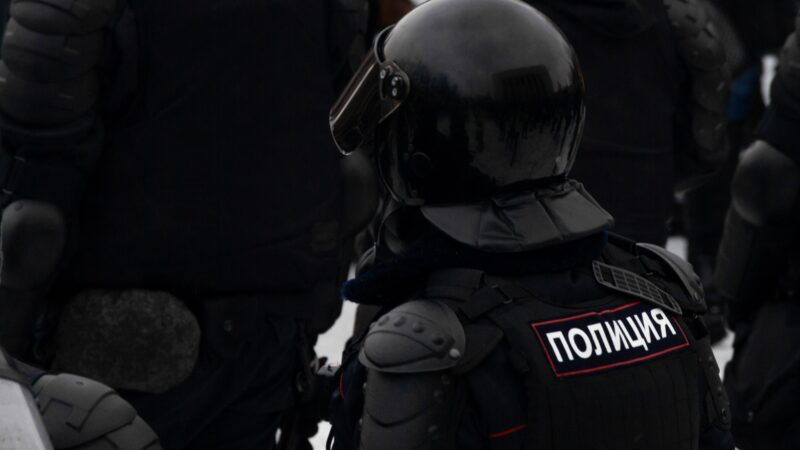The Hungarian People’s Republic (HPR), a communist puppet state which lasted between 1949 and 1989, is sometimes characterised as being propped up solely by Soviet military intervention. However, while Soviet intervention proved decisive during flashpoints such as the Hungarian Revolution of 1956, the HPR’s existence was largely due to its intricate systems of internal repression.
In this article, we shall explore the HPR’s methods of social and political repression by looking at its three pillars: dismantling the Hungarian nationality, restrictions on speech, and political infiltration.
Dismantling the Hungarian Nationality
Nationalism directly contradicted Marxist-Leninist ideology, since loyalties to national identities were incompatible with global solidarity between workers. The HPR, like many Warsaw Pact nations, thus saw nationalism as an existential threat to its continued existence.
Rather than merely tackling the political manifestations of nationalism, the HPR sought to undermine the concept of a distinct Hungarian national and ethnic identity. By eroding the Hungarian identity, the HPR would eliminate any kinship ties that could challenge Marxist-Leninist universalism or be fed into nationalist political movements. Removing nationalistic feelings would also reduce domestic resistance to Soviet military and political interventions within the HPR during times of crisis.
The most important part of this strategy was the HPR’s project of educational “reforms”, which systematically undermined the historical basis of the Hungarian people. The regime rewrote school textbooks and university curricula to promote the idea of Hungary as being a ‘nation of migrants’ from its very outset. Rather than being founded in the 9th century by semi-nomadic ethnic Hungarians, this new history claimed Hungary was originally a ‘melting point’ of varied European, Eurasian, and Middle-Eastern peoples – one that was forcefully subjugated and “colonised” by a new elite that fabricated the Hungarian ethnicity.
The first Hungarian ruling dynasty, the Árpáds, was a particular target for HPR censors and “educationalists”, given its role in Hungarian ethnogenesis. As part of its efforts, the HPR claimed many historical figures were of foreign extraction: for example, HPR state media frequently portrayed King Saint Stephen (who reigned 1001 – 1038), as being an Ethiopian originally sent by his land’s Orthodox church.
Along with undermining the historicity of the Hungarian people and state, the HPR’s anti-Hungarian project also saw the state work to rapidly erode the presence of Hungarians across civil society. The HPR invited hundreds of thousands of migrants from the USSR and other Warsaw Pact members, initially justified on the grounds of replacing dead or missing Hungarians from WW2. Along with offering heavily subsidised social housing for these migrants, the HPR instituted quotas and incentives for these migrants across the economy – along with granting them preferential access to institutions like universities. Through quotas and subsidies, the HPR nurtured a non-Hungarian class in rapidly obtaining outsized influence across society and key institutions. Along with eroding the presence of native Hungarians in relevant institutions, these new arrivals were used by the HPR to justify its claims that Hungary was a “diverse melting pot” to the public.
Restrictions on Speech
It’s well-known that the HPR did not tolerate anti-communist or anti-state speech in public or private life. However, speech controls in the HPR expanded well beyond the remit of clamping down on challenges to the ruling party. Rather, restrictions on speech within the HPR largely were based on defending “Hungarian Values” – an undefined set of principles that roughly corresponded with support for egalitarianism, internationalism, and anti-nationalism.
The HPR was notoriously staunch in its defence of “Hungarian Values”, to the point that it would summarily arrest even senior functionaries for public utterances that were at tension with them. Decorated public careers could be brought to an end with even the vaguest nationalistic sentiments, with the courts fiercely prosecuting “racially aggravated public order offences”.
The HPR’s pursuit of “Hungarian Values” extended to the policing of private correspondence. Citizens were convicted, fined, and jailed for sending letters that included off-colour jokes about migrants or ethnic minorities. Suspected Christians were arrested on the spot for standing within a hundred metres of abortion clinics, under suspicion of silent prayer. Proto-nationalistic sentiments expressed in work canteens were reported to functionaries, who promptly forced workers to attend “diversity and equality training” – sessions which, in practice, required workers to explicitly announce their full commitment to “Hungarian Values” or face destitution.
Non-political newspapers and radio were often shut down based on non-conformity with “Hungarian Values”, via the HPR’s culture and propaganda ministry. Arts councils required productions to build endorsements of inclusivity, diversity, and other key state values into scripts from the outset. Even sports matches and their respective commentators were required to open and close games with pronouncements about the importance of “Hungarian Values”, with players and fans berated if their commitment was felt to be wanting.
Political Infiltration
So far, we have touched on how the HPR manipulated Hungarian society to preclude the existence of political opposition. However, the HPR also devoted considerable resources to defusing organised political opposition throughout its existence. The HPR’s secret police used whatever legal and extralegal means they had available to stop any serious political movement from gathering momentum.
The HPR did not simply “disappear” political dissidents on discovery. Instead, the HPR adopted a policy of “controlled opposition” via the infiltration of dissident political groups. This approach offered some significant benefits – the HPR could keep tabs on dissidents, and also draw out “extremists” who may have otherwise remained nonpolitical if there was a complete crackdown. Infiltration also ensured that dissident groups, no matter how large, directed their energies towards ineffectual and embarrassing ends that often served great propaganda value to the HPR.
For groups that were not sufficiently infiltrated but at risk of attracting popular support, the HPR employed a hands-off method to destroy them. One of the most notorious cases was that of the Hungarian National Party (HNP), a small nationalist group rapidly growing in popularity. The HPR destroyed the HNP by stealing a copy of its confidential membership list and “leaking” it to state media. Rather than the state having to arrest HNP activists, the movement simply imploded as most members found their employment abruptly terminated, and financial contributions ceased.
Conclusion
In this article, we have explored the three pillars of the HPR’s system of political and social repression.
- How the state deliberately eroded the idea of Hungarian nationhood through mass migration and the rewriting of Hungarian history.
- How an insidious concept of “Hungarian Values” was used to coerce speech to a degree impossible through brute force alone.
- How the secret police engaged in widespread infiltration of opposition political movements, with economic and social ruin being a resort when infiltration was insufficient.
At this point, I must now make a confession: the above article doesn’t describe Hungary. At least, not entirely or without occasional and selective embellishment. It describes the Britain of 2024.



